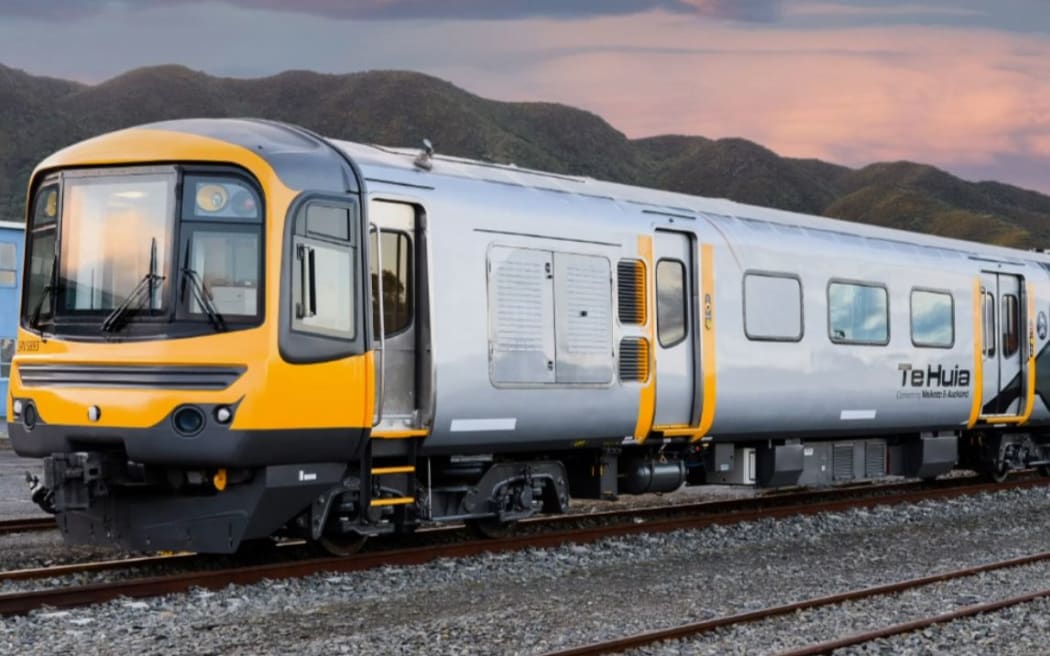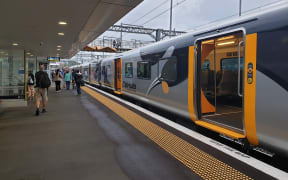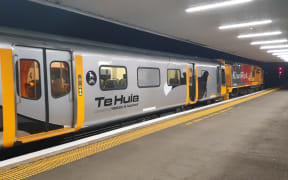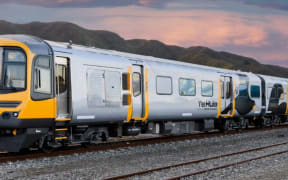
Photo: Supplied / Waikato Regional Council
A reduction in funding for the Waikato to Auckland commuter train Te Huia, which was less than expected, may still spell its demise.
Waikato Regional Council and Te Huia supporters have welcomed news Waka Kotahi New Zealand Transport Agency (NZTA) will continue to fund the service at a reduced rate.
It would do this by progressively reducing its contribution to the funding assistance rate (FAR) from 75.5 per cent to 60 percent, starting on 1 July.
Supporters are claiming the outcome as a victory, but Waikato Regional Councillor Angela Strange would not be drawn on whether it could ensure the survival of the service.
That is because the council has to go through its long-term plan budget in the next fortnight and work out where it can find the 5.5 percent in FAR that NZTA will drop next year.
Strange said the announcement was good news but she did not want to pre-empt the long-term plan outcome and could not conclusively say that Te Huia would continue.
NZTA's contribution had been expected to drop immediately to 51 percent by those fighting for the train service's survival.
However, Campaign for Better Transport convener Jodi Johnston said the decrease in funding could make it harder for the service to continue in its current form.
"So there may need to be fare increases, the quality of service may need to decrease slightly but it does mean that the trial should be able to continue until June 2026, which is definitely a win from our side."
The future of the service had been up in the air after the government had not allocated further funding past 30 June for the remaining two years of a five year trial.
On Thursday, the NZTA board met to thrash out the funding and on Friday confirmed it would continue to invest in the service, but at the progressively reduced rate.
Strange, the Future Proof Public Transport sub-committee deputy chair, said the news meant the service had continued central government funding and recognised Te Huia was well on track to achieving its targets set by NZTA.
It gave the council the certainty it needed to continue planning for interregional passenger rail connecting New Zealand's fastest growing city and largest city, she said.
"We appreciate the board's support and belief in the service. It's clear they have also listened to our passengers, who say this service is a vital link to study, employment and social connections with family and friends; it's not a luxury for them."
Strange said only yesterday the council heard from tamariki they want Te Huia to continue because it was about their future.
"We have received overwhelming support from the regional community, including through submissions to our long term plan and the regional land transport plan, and I know our loyal passengers will join us in rejoicing over this news," she said.
"This decision supports the vision those before us had for a service connecting Waikato and Auckland, and the work of the amazing KiwiRail crew."
Te Huia is funded by both passenger fares and public funding (taxpayer and ratepayer funding). This funding was equal to the gross operating cost minus fare revenue.
The public funding portion is currently split between NZTA (75.5 percent), Waikato Regional Council (21.2 percent) and Waikato District Council (3.3 percent).
The board decided to progressively reduce the subsidy to 60 percent over the next two years, starting with a reduction to 70 percent in July and dropping to 60 percent in 2025 and 51 percent in 2026.
Waikato Regional Council would need to consider options for providing the regional share, which will be discussed through long-term plan deliberations due to begin on 24 May.
NZTA board chief executive Nicole Rosie said funding pressure for land transport and a new draft Government Policy Statement on Land Transport (GPS) which outlined new priorities for NZTA, meant on-going co-investment in such services had to be carefully considered.
"The start of the Te Huia trial was delayed due to Auckland rail network rebuild and various Covid lockdowns and the trial is now timed to run until April 2026. As a result, further funding approvals were required," she said.
"Performance for Te Huia as a start-up public transport service has been generally encouraging. While the service has gradually built patronage, Te Huia has not achieved all of the targets set out in the original business case.
"Our decision to progressively reduce the level of our co-investment aligns with the draft-GPS, takes into account current funding pressures and recognises the performance of the trial to date.
"Waikato Regional Council runs Te Huia and they will need to determine what the operational impacts could be. They will need to take some time to work through the impact of the Board's decision on the service and their local co-investment share. NZTA will work closely with them and continue to support Te Huia for the remainder of the trial."
The new co-investment arrangements for Te Huia come into effect from 1 July, 2024.
NZTA's co-investment in public transport is expressed as a 'Funding Assistance Rate' (FAR). This is a percentage of the cost of operating the service net of fare and other revenue received.
For most public transport services across the country, the standard FAR is 51 percent.
Ticket prices will increase from $18 to $22 for a one-way trip from 1 July.






